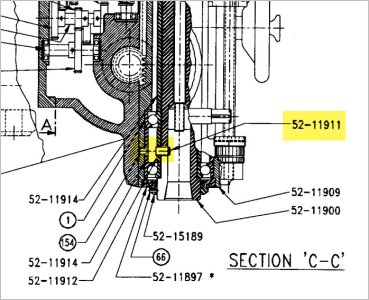I am headed off to the post office this morning to mail this drawbar centering collar to
@CWret. But I thought I would post a photo and a description first because this one is a bit different from others I have made and probably more typical of the average bench top mill out there.
As mentioned earlier, the collar serves two purposes - to center the draw bar inside the spindle, and space the drawbar up a bit so it doesn't thread as deeply into R8 Arbours. One can always add washers or custom spacer collars to add additional spacing if needed.
The main reason for adding this post is to briefly discuss the need to accommodate rolled threads on the drawbar.
Rolled threads are a fast and easy way to make threaded fasteners in industry that reduces waste. The threads are not cut and produces no swarf. Instead the rolling process displaces metal and the outside diameter of the threaded section gets bigger than the shaft they are rolled on. To accommodate this diameter growth, the shafts are deliberately undersized so they can grow to the target thread dimensions.
In the case of a drawbar with rolled threads, that means that the drawbar itself has a smaller shaft than the OD of the threads. As a result, one cannot simply slip a centering collar over the threads because anything that can clear the threads will be a loose fit at the top of the drawbar, which at least partially defeats the purpose of centering the drawbar inside the spindle.
The solution is to size the collar ID to fit the shaft, and then cut threads in it to clear the rolled threads of the shaft. The collar is then simply spun on over the threaded end until it clears the threaded section and then it will slide over the rest of the rod. Problem solved.
In CWret's case, the drawbar threads are cut, not rolled. Therefore the collar I made for him is not threaded. The threads on my Hartford Clone drawbar are rolled. So my collar is threaded.

